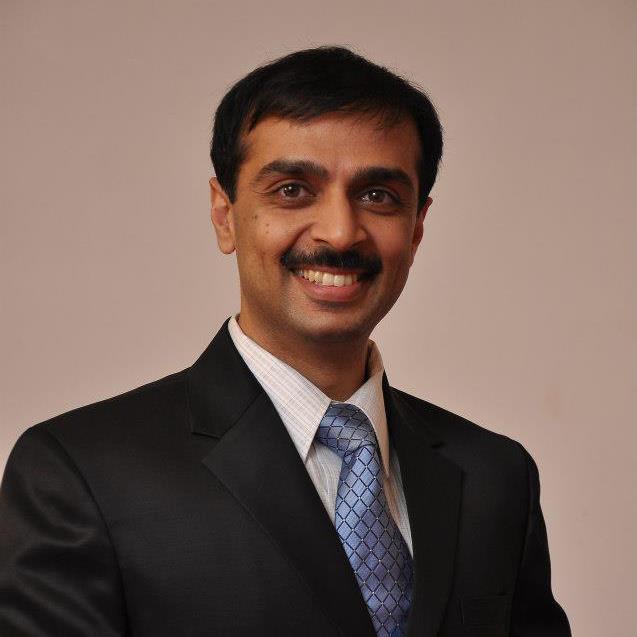Interview with Professor Ajit Rajwade

 Ajit Rajwade is an associate professor in the department of computer science and engineering at IIT Bombay, India. He obtained his Bachelor’s degree from the Government College of Engineering, Pune affiliated to the University of Pune (India) in 2001, his Master’s degree from McGill University (Canada) in 2005, and his PhD degree from the University of Florida (USA) in 2010, all in computer science. Before joining IIT Bombay, he worked as a postdoctoral research at Duke University in the department of electrical engineering.
Ajit Rajwade is an associate professor in the department of computer science and engineering at IIT Bombay, India. He obtained his Bachelor’s degree from the Government College of Engineering, Pune affiliated to the University of Pune (India) in 2001, his Master’s degree from McGill University (Canada) in 2005, and his PhD degree from the University of Florida (USA) in 2010, all in computer science. Before joining IIT Bombay, he worked as a postdoctoral research at Duke University in the department of electrical engineering.
His areas of interest are image processing, signal processing and computer vision, with a focus on compressive sensing, tomography, image compression, inverse problems and image restoration. He has published many conference and journal papers in these topics. He received the best paper award for a co-authored paper at ICPR (International Conference on Pattern Recognition) 2008, and recently won a departmental award for teaching excellence at IIT Bombay, India.
Q. Please tell us about your recent work in the area of signal processing.
The bulk of my current research work is in the areas of compressive sensing, tomography, image compression and image restoration. In many of these applications, I have been using tools from statistical signal processing.
Q. Would you please share any of your impactful work with us?
In particular, I have focused quite a bit on proving performance bounds for compressive sensing under different, realistic noise models for the measurements, such as the model of Poisson-Gaussian-quantization noise in optical imaging systems, combined with sensor saturation effects. Parts of this work have been published in Elsevier Signal Processing, IOP Journal of Inverse Problems, and the International Conference on Image Processing (ICIP).
I have also been excited by our recent work in compressed sensing with an improperly calibrated sensing system. In particular, we have considered Fourier sensing matrices, where the frequencies at which the Fourier transform is measured, are incorrectly specified. This has direct applications in MRI, as well as tomography with incorrectly specified projection angles.
Likewise, we have also worked on restoration of images of scenes submerged in water but acquired by a camera in the air. This causes dynamic refraction effects, leading to non-rigid spatial deformations. We have framed the problem of correcting for these effects as a motion estimation problem (with respect to a carefully obtained template) within a compressed sensing framework. This is an interesting application of compressed sensing to a very classical computer vision problem. This work was recently presented in ICCV (International Conference on Computer Vision) 2019.
Another area I am working on is in algorithms for enabling reduction of radiation dosage administered to patients. This is by improving tomographic reconstruction techniques, intelligently using prior knowledge regarding the underlying objects which are to be reconstructed, combined with precise knowledge of noise models.
Q. In your opinion, what are the some of the most exciting areas of research in signal processing for students and upcoming researcher?
I personally believe that the areas of compressed sensing, low rank matrix recovery and robust principal components analysis, are still very fertile avenues for research, with several open problems in algorithms, theory as well as application. Moreover, there is the area of deep neural networks, where a lot of rigorous theoretical analysis, still remains to be done. Combining deep neural networks with traditional signal processing, is another exciting area. Another very interesting area of research for the image/signal processing community is cryo-electron microscopy/tomography, which involves 3D tomographic reconstruction with the interesting twist that viewing parameters (projection angles) are completely unknown. In this application, one also sees extremely low SNR values in the measurements, much lower than what we see in typical image processing tasks.
Q. What challenges do you think our current student population faces as far as preparedness for a career in signal processing related research and development is concerned?
The primary challenge I think is that students need to focus on fundamental concepts of signal processing, which in turn also requires paying careful attention to basic mathematical concepts from linear algebra, optimization, probability, differential geometry, etc. While deep neural networks have shown very impressive results, it is important to never forget the basic signal processing fundamentals. Moreover, it is important to focus on a rigorous theoretical analysis of the results produced by neural networks, so that one continually asks important questions underlying empirical performance and seeks to understand the performance limits. Several students I see these days seem to ignore these issues and stop after getting impressive results on standard datasets using machine learning techniques.
On a related note, I also feel that a few signal processing subjects should be included in the core computer science curriculum at all levels. Signal processing opens up a fertile ground for computer scientists, for exploring several computational problems with many interdisciplinary applications. Traditionally, such subjects have been part of electrical engineering, but have not been included as not part of computer science syllabi in many places. However, I consider myself very lucky that though my entire education has been in computer science, there was always a huge emphasis on signal processing from my teachers and advisors. In fact, during my Bachelor’s degree in computer science at the University of Pune, we had a compulsory course on digital signal processing, which is somewhat rare.
Q. What should we be doing to increase the interest of budding engineers in the areas of signal processing?
First of all, I do think that there is a lot of interest in signal processing among engineers. But we can always do better. One immediate way is to highlight the impact of signal processing techniques in the industry, for example in areas such as healthcare, communications, geophysics and audio processing, via workshops, plenary talks at conferences, etc. The other is to float practical or experimental challenges for students, as part of signal processing conferences. Of course, a lot of this is already being done. But as mentioned earlier, it is also important to always strive to inculcate in students a tendency for learning from fundamentals, as opposed to working with "blackboxes".
About Dr. Rajwade:
Ajit Rajwade is an Associate Professor in the department of computer science and engineering at IIT Bombay, India. He obtained his Bachelor’s degree from the Government College of Engineering, Pune affiliated to the University of Pune (India) in 2001, his Master’s degree from McGill University (Canada) in 2005, and his PhD degree from the University of Florida (USA) in 2010, all in computer science. Before joining IIT Bombay, he worked as a postdoctoral research at Duke University in the department of electrical engineering. His areas of interest are image processing, signal processing and computer vision, with a focus on compressive sensing, tomography, image compression, inverse problems and image restoration. He has published many conference and journal papers in these topics. He received the best paper award for a co-authored paper at ICPR (International Conference on Pattern Recognition) 2008, and recently won a departmental award for teaching excellence at IIT Bombay, India.

